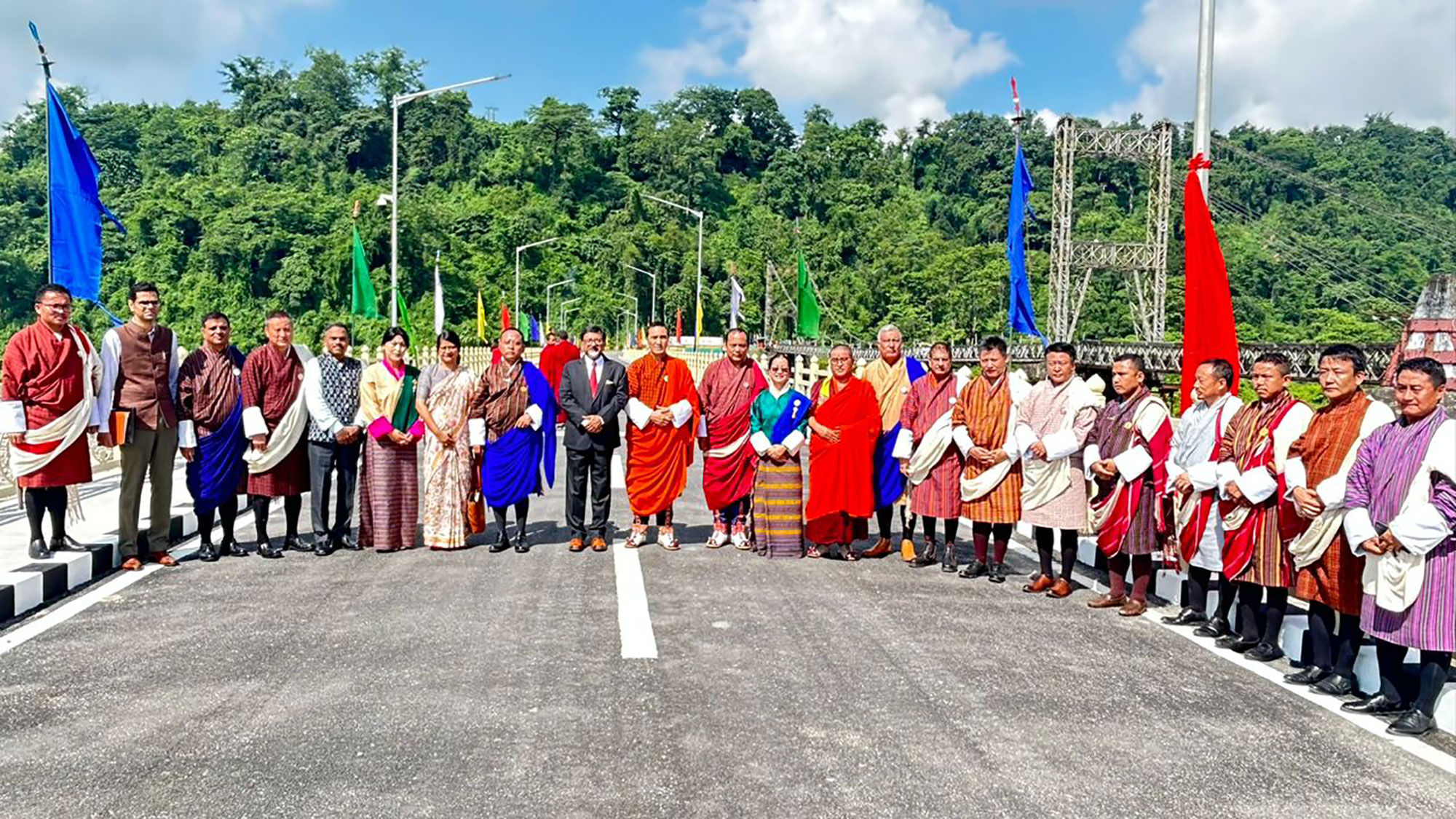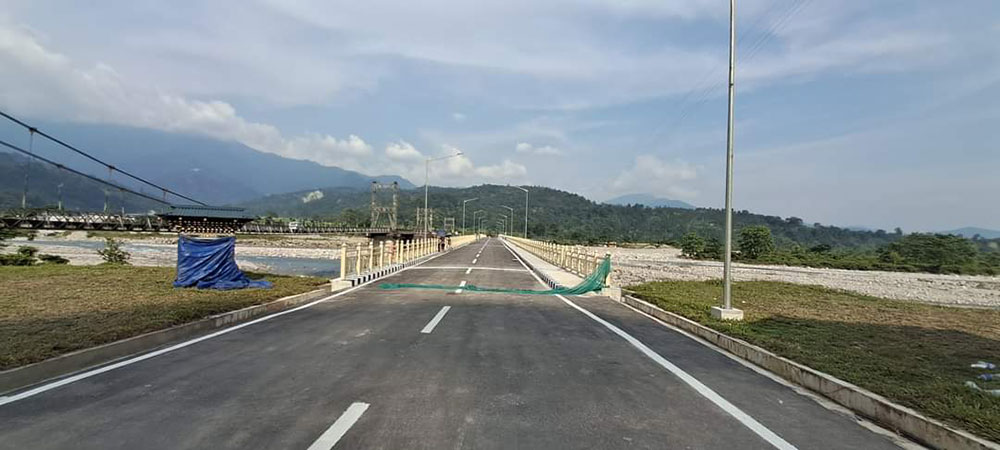YK Poudel
With the inauguration of Diana Kuenphen Bridge on September 16, Samtse has a new 280-metre two-lane bridge and with a carrying capacity of 70 metric tonnes.
Infrastructure and Transport Minister Dorji Tshering and Ambassador of India to Bhutan, Sudhakar Dalela, inaugurated the bridge.
The bridge connects 10 gewogs with the dzongkhag headquarters.
The Rigsar Construction Private Limited (RCPL) began the work in July 2021 with funding of about Ngultrum 220 million from the Government of India. The actual deadline for RCPL is November 2024—the work is completed 14 months ahead of the given timeline.

Infrastructure and Transport Minister Dorji Tshering and Ambassador of India to Bhutan, Sudhakar Dalela, with dzongkhag officials
RCPL Project Manager Sonam Wangdi said that despite the Covid-19 pandemic, work on the project continued with all containment protocols in place, and local workers were employed when foreign workers were unable to work during the pandemic.
“Inflation did not have an adverse impact on the project as there was a price adjustment agreement for the project,” he said.
The new bridge has replaced the old 300-metre suspension bailey bridge, the longest bridge in the dzongkhag which could carry only 40 metric tonnes due to wear and tear although its original capacity was 60 metric tonnes.
The drivers and commuters expressed their appreciation to the contractor for the timely completion of the work.
BM Tamang, a truck driver said that the new bridge will make it easier for heavy vehicles to travel sideways. “The heavy vehicle drivers had to ply through Diana River, a risky job during the monsoon when river volume was high. Now, this bridge will reduce the congestion and the risk associated with crossing the river.”
Tanka Pradhan, a taxi driver, said that the old bridge allowed only one vehicle at a time to ply through the bridge—the new bridge will allow easy two-way movement of vehicles solving wait time and congestion.
Passang Dorji, a regular commuter, said, “The commuters can now safely move without much congestion and risk.”


